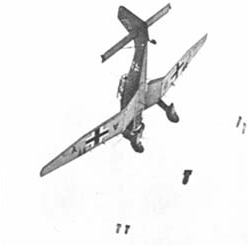Well, here's a bit about the gunship, and how it came about. As it was, the United States had been toying around with the concept of the gunship helicopter since the end of Korea. It'd seen what helicopters could do, and adding fire support to the grunts was thought up and retained in Marine and Army generals alike.
As it was, Vietnam encouraged the idea of a gunship because the helicopter was already a key tool of warfare in the jungles and mountainous areas of that country.
When Bell company made the Huey helicopter, it was originally designed solely for getting wounded people off, because the UH-34D Sea Horse and H-21 Shawnee (known as the flying banana) were quite capable of transporting troops.
However, the Huey was seen by the Army as having the capacity and speed of being Air Cavalry, as well as Air Assault. The Navy and Marine Corps also saw the opportunity, and shortly, all three made gunships out of the Huey. Whats interesting is that each branch used their own philosophy about firepower and how to use it.
The Navy believed in side door action, with m60s or miniguns (7.62mm Calibre), and rack mounted rocket pods, with miniguns attached. The Army had similar ideas, only their miniguns and rack mounted m60s were leveragable, about 45 degrees up and down. The Army also had door mounted miniguns or m60s, depending on Air Cavalry squadron. Because the war was so occurring over such diverse landscape, many different approaches to firepower and how much of it should be versatile, etc should be applied.
The USMC had fixed m60 rack mounted machine guns, along with the usual rocket pods and door mounted m60s.
Something very interesting, and not many people know this, but the Huey Gunships (a good deal of them anyway, especially in Gunship devoted squadrons) had nose mounted cannons, machine guns, or grenade launchers. The cool thing about the grenade launchers (40mm Calibre) is that they were automatic fire (Shown in the oil canvas painting), so their rate of fire was a little less than the 20mm cannon, or m60 turrets employed.

The Army employed the nose mounted grenade launcher the majority of the time (because, again, everything varied) while the Navy did not usually mount nose weapons. Marines had two nose variants besides the grenade launcher (which was not used extensively by the marine UH-1E Hueys, but was by the AH-1G and AH-1J Marine Cobras).

^Thats the TAT-101, two m60Cs modified for Huey use. The turret cap has been stripped away, to discontinue the jamming of all the dirt and bullet cases that were caught in the cap.

Thats the m197, also put on the UH-1E turrets of the USMC.
The Huey made a big target, and U.S. tacticians wanted to increase their firepower coming from their gunships, and yet minimize the size, and create a more maneuverable and slimmer helicopter that could be just as, or more effective.
The US Army first fielded the AH-1G Cobra in '68, and the USMC borrowed 38 of them. The AH-1J then was fielded by the USMC, specifically for themselves, built upon the USMC doctrine of firepower. The USMC AH-1J could carry up to 38 rockets, have a 3 barreled 20mm Cannon in the nose, or a nose mounted grenade launcher (40mm) that was automatic, like the Hueys.
The Army, tried everything, and in the end, couldn't decide which one it liked better.
So the Army squadrons did both.

The Army also liked the extra lead spewing ideas, and as a result...

Those side canisters are filled not with gasoline, but with 6 barreled 7.62mm Gatling guns. The rocket carrying capacity dropped to around 24 rockets.

Thats a head on shot of the Cobra. Note how narrow it is, and how slim the fuselage is. The Cobras were able to avoid head on bullets a lot better than the Hueys. The Cobras also had copper plating for armor, which was very effective. The glass, however, was not bulletproof. This induced the Cobra pilots to keep turning, covering their flanks, so they didn't get bullets in the cockpit.

After Vietnam, the Army transferred from Cobras to Apaches, utilizing the tank buster philosophy, and using anti personnel helicopters, like the OH-A6 Little Bird with miniguns for mopping up and supporting ground troops.

^Apache

^Earlier model of the OH-6A, used in Vietnam, they now are used as mini gunships
The blackhawk also can be used as ground support, due to its utility on the battlefield. Blackhawks can have m240s or m1314s.
In the USMC, Apache purchase was thought of, but the USMC disliked the slowness and apparent clumsiness of the tank buster, and developed its Hueys (the Army discontinued Hueys in its branch) and Cobras to become the UH-1Y Huey “Venom” and the AH-1Z Zulu Cobra.


^ Zulu Cobras


^UH-1Y Venom Hueys

























